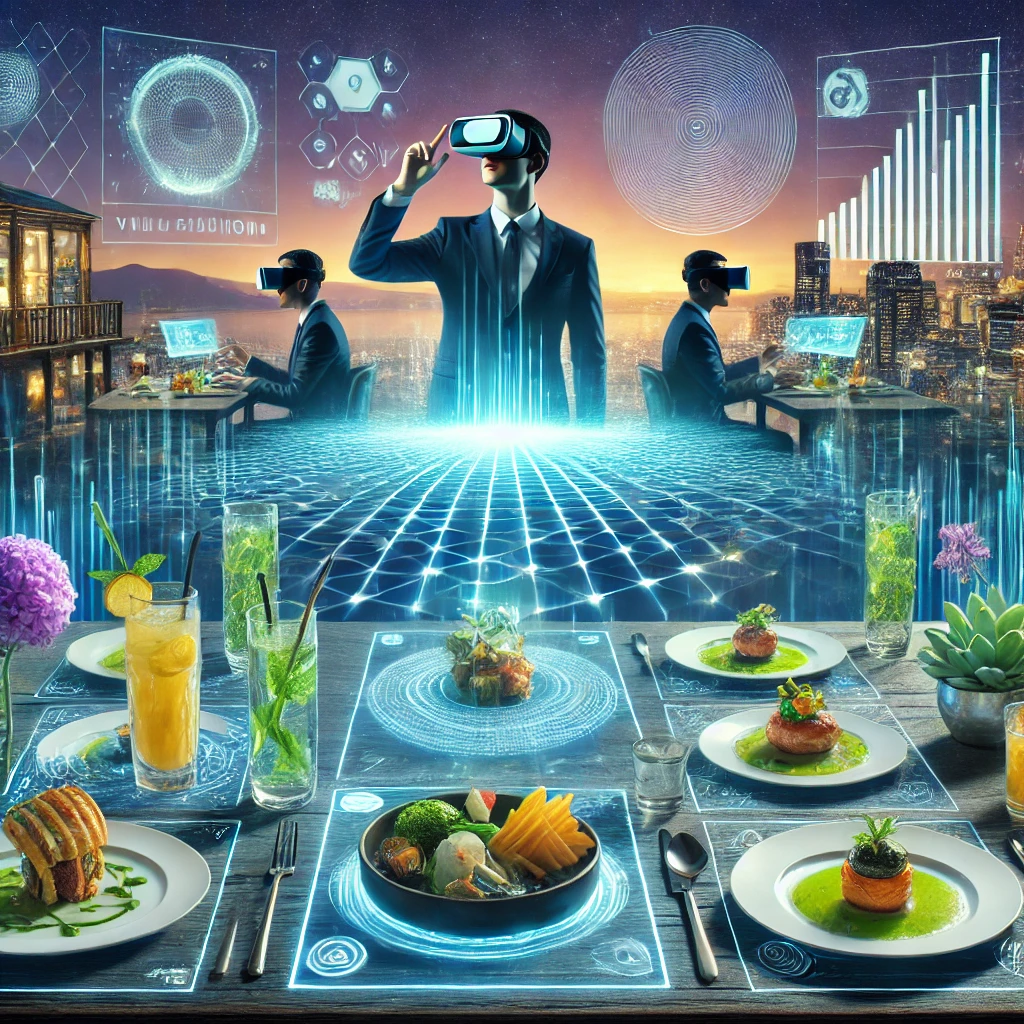Visions for the Next Centuries and the Impact on Fine Dining

As we look towards the future, the way we produce, prepare, and consume food is set to undergo transformative changes. Advances in technology, growing environmental concerns, and evolving dietary needs are driving the evolution of our food systems. Over the next centuries, we can expect innovations that will redefine not just what we eat but also how we experience food. These changes will have a profound impact on all areas of food culture, including fine dining. Here’s a look at the potential future of food and what it could mean for dining experiences as we know them.
1. Lab-Grown and Synthetic Foods
One of the most revolutionary developments is the rise of lab-grown and synthetic foods. From cell-cultured meat and fish to plant proteins produced in bioreactors, synthetic food sources promise to drastically reduce the environmental footprint of traditional agriculture. Lab-grown meat, for example, could eliminate the need for raising and slaughtering animals, leading to more ethical and sustainable food production.
Impact on the Future of Food: Lab-grown foods could become everyday staples, offering a consistent and customizable alternative to conventional animal products. This technology allows for the precise engineering of taste, texture, and nutritional content, potentially creating foods that are superior to their traditional counterparts in many ways.
Impact on Fine Dining: For fine dining, lab-grown foods present both challenges and opportunities. On one hand, chefs can craft dishes using perfectly controlled ingredients that offer unique flavors and textures not possible with traditional ingredients. On the other, there may be resistance from diners who value natural and traditional food sources. Fine dining restaurants might position lab-grown foods as a cutting-edge luxury, turning these innovations into a point of distinction and exclusivity.
2. Personalized Nutrition and 3D-Printed Food
The future of food is increasingly personalized, thanks to advances in biotechnology and AI. Personalized nutrition, supported by 3D food printing, will enable the creation of meals tailored to an individual’s genetic makeup, health needs, and personal preferences. Using data from wearable health devices, meals can be optimized to support specific dietary goals, such as managing blood sugar levels or enhancing physical performance.
Impact on the Future of Food: Personalized nutrition could revolutionize how we eat, moving beyond general dietary guidelines to precise, data-driven meal planning. 3D-printed food allows for intricate designs and textures, making food not only nutritionally optimized but also visually stunning.
Impact on Fine Dining: In fine dining, personalized menus could elevate the guest experience to a new level of customization. Imagine a dining experience where each course is uniquely crafted to suit the guest’s health profile, preferences, and even mood. This would turn dining into a deeply personalized journey, blending the art of cooking with cutting-edge technology.
3. Sustainable and Regenerative Food Systems
As the world grapples with climate change, sustainable and regenerative food systems will become critical. Techniques like vertical farming, aquaponics, and regenerative agriculture aim to create food systems that not only reduce harm but actively restore ecosystems. These methods focus on improving soil health, reducing water usage, and increasing biodiversity.
Impact on the Future of Food: Sustainable food production will be essential for feeding the growing global population. Urban farms, rooftop gardens, and community-based agriculture could become common, providing fresh produce in densely populated areas.
Impact on Fine Dining: Fine dining has long embraced the farm-to-table movement, and regenerative food systems offer an opportunity to deepen that commitment. Chefs can highlight sustainable ingredients that not only taste great but also tell a story of environmental stewardship. This connection to the earth can add layers of meaning to the dining experience, making it not just a meal but a statement about the future of food.
4. Alternative Proteins: Insects, Algae, and Beyond
The quest for sustainable protein sources has brought attention to alternatives like insects, algae, and lab-grown microalgae. Insects, for instance, are a rich source of protein and nutrients and can be farmed with minimal environmental impact compared to traditional livestock.
Impact on the Future of Food: Alternative proteins could become a crucial part of our diets as conventional meat production becomes less sustainable. Products like cricket flour, algae-based snacks, and plant-based seafood are already entering mainstream markets, and their popularity is likely to grow.
Impact on Fine Dining: In fine dining, alternative proteins could be presented as innovative, gourmet ingredients. Chefs might use them to create avant-garde dishes that challenge conventional expectations. By creatively integrating these proteins into menus, fine dining can lead the way in normalizing new food sources.
5. Multisensory and Immersive Dining Experiences
Future food experiences will not be limited to taste alone. Advances in technology, including VR and AR, are opening up new possibilities for multisensory dining. Imagine a meal where you not only taste the food but also see, hear, and feel the environment from which the ingredients are sourced.
Impact on the Future of Food: Food will evolve into a multisensory experience, enhancing how we connect with what we eat. Dining could become a blend of storytelling, art, and technology, turning a simple meal into an immersive journey.
Impact on Fine Dining: Fine dining is poised to embrace these innovations fully. High-end restaurants can use VR or AR to transport guests to the origins of their food, like a vineyard in France or a bustling spice market in Morocco. These technologies can add depth and dimension to the dining experience, making fine dining more engaging and memorable than ever before.
6. Edible Packaging and Zero-Waste Solutions
To combat plastic waste, the future of food will likely include edible and biodegradable packaging. Innovations like seaweed wraps, edible films, and compostable containers are being developed to reduce the environmental impact of packaging.
Impact on the Future of Food: Zero-waste grocery stores and packaging-free delivery services may become the norm. Edible packaging could eliminate millions of tons of plastic waste each year, aligning food production with a more sustainable future.
Impact on Fine Dining: For fine dining, zero-waste principles could redefine luxury. Instead of lavish excess, luxury could be found in minimalism, sustainability, and the creative reuse of ingredients. Chefs might craft dishes where every element, including the packaging, is designed to be consumed, turning waste into a delightful part of the meal.
Conclusion: The Future of Food and the Role of Fine Dining
The next centuries will bring extraordinary changes to the way we eat, driven by the need for sustainability, technological innovation, and personalized experiences. Fine dining, as a dynamic and evolving art form, is well-positioned to adapt and thrive in this new landscape. While the essence of dining will remain—celebrating food as a source of pleasure, culture, and connection—the ways in which we approach it will evolve dramatically.
Food will not just be about nourishment; it will be about storytelling, health, and sustainability. Fine dining will continue to exist, not just as a luxury but as a space where the future of food can be explored, celebrated, and shared.
The future of food is an exciting frontier where tradition meets innovation. As we move forward, fine dining will play a crucial role in bridging the past and the future, offering a taste of what’s to come in the world of food.







